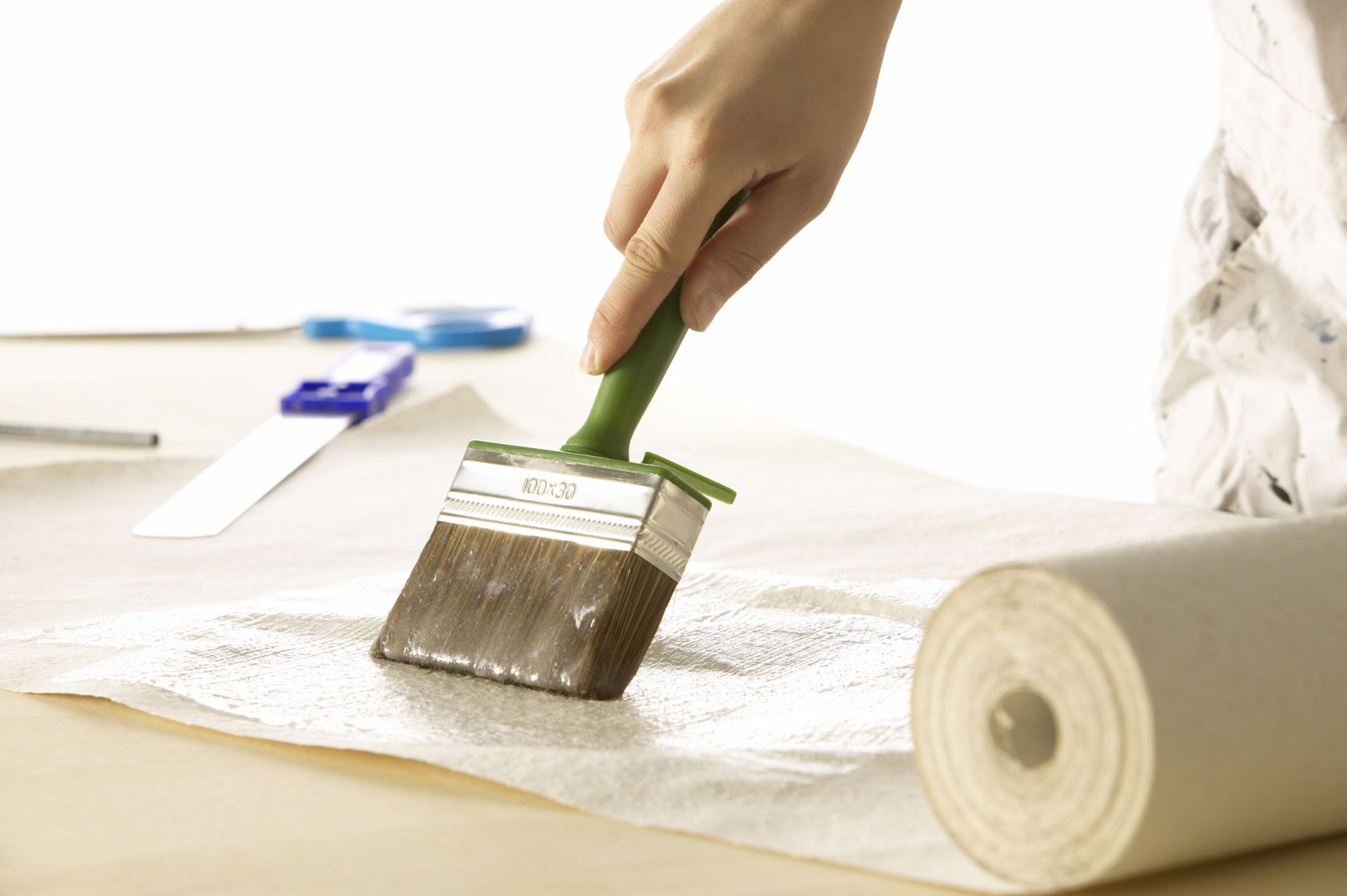A guide to wallpapering windows like a professional for really neat edges
Wallpapering windows is not for the faint-hearted home decorator but it's an achievable DIY with our expert guide.


While you might be happy with the thought of wallpapering walls, wallpapering windows is a bit more daunting. And it’s true that it does take some care to wallpaper around a room’s obstacles – and windows are one of them.
But we’re here to help and once you know what you need to do you’ll be able to get a great finish around windows and into the recess for a pro standard job. ‘The key is to take your time and make sure you’ve got the right tools to hand,’ says Jason Hines, Trading Director for Decorative, Homebase.
Get savvy about how to wallpaper round a window with our step-by-step guide. All you need to do is scroll down.
- Find all the best wallpaper ideas to inspire your look.
How to wallpaper around a window
You will need:
- Dust sheets
- Stepladder
- Bucket of water
- Paper-hanging brush
- Pasting table
- Tape measure
- Plumb line or spirit level
- Wallpaper scissors
- Sponge
- Wallpaper
- Wallpaper paste
- Seam roller
- Need to remove wallpaper too? DIY.
1. Start with the walls
Wondering if you should wallpaper walls or windows first? The answer is to start with the walls. The first length of wallpaper in a room should be hung on the wall next to the wall with the main window.
And do you wallpaper towards or away from the window? ‘When hanging wallpaper, it is best to work away from the window,’ says Chris Moorhouse, Category Director for Timber, Building, Décor and Garden at Wickes. ‘This is so that paper edges do not cast a shadow if they overlap slightly. It’s always best to start in the direction based on your dominant hand, that is if you’re left-handed, start on the left side of the window.
‘Another top tip would be to avoid hanging harrow strips against the windows to ensure these edge pieces do not peel away over time.’
Get small space home decor ideas, celeb inspiration, DIY tips and more, straight to your inbox!
- DIY: painting windows.
2. Overlap the window frame
As you reach a window recess, hang a full length drop of wallpaper overlapping the opening.
Bear in mind that you might need someone to help support the weight of the pasted paper at this stage.
- See more on painting molding and trim in our guide.
3. Cut the wallpaper at the top and bottom of the recess
Using the scissors, make a horizontal cut level with the top edge of the recess. Make a parallel cut level with top of the windowsill. These cuts will allow the wallpaper to cover the side of the recess.
A cut out for the windowsill will also be required. It can be helpful to press the wallpaper against the sill to make its outline in the paper, the pull it away from the sill to cut.
4. Smooth the wallpaper into the reveal
If there is sufficient wallpaper to fit the depth of reveal, crease it around the corner using a paper-hanging brush.
Not enough paper to reach the window frame? Cut and paste a wallpaper strip that’s a bit wider than the gap and hang it on the side of the reveal. If your wallpaper is patterned, take care to match the pattern.

5. Trim the wallpaper
Run the scissors along the crease to create a cutting line. Gently peel back the wallpaper and trim to fit. Use the brush to smooth the paper into place.
6. Work from the top of the wall
Cut a piece of wallpaper large enough to extend from the ceiling above the window to the window and into the recess as far as the window frame, allowing some extra for trimming.
Hang this next to the previous strip of wallpaper and use the brush to smooth it into the window recess. Trim at the ceiling level and at the top of the window frame. Repeat as necessary above the window.
- Decor inspo: Living room wallpaper ideas.
7. Wallpaper under the windowsill
Measure from the top of the baseboard to the windowsill and add an extra 2 inches (50mm) for trimming. Cut the strips of wallpaper to this length to cover the area below the window.
Hang the wallpaper below the window, matching patterns if required.
8. Neaten the top corners
Cut the full length drops of wallpaper on either side of the window so they fit under the top of the window opening. It’s worth cutting and pasting these first before finally pasting the lengths of wallpaper in the sides of the reveal for a neat finish.
- DIY: painting doors to get the job done before you start wallpapering.
Pro tip: ‘Pre-cutting your strips of wallpaper will really help when you’re wallpapering around a window,’ says Chris Moorhouse. ‘Measure the space around the window before you start, adding an extra 4 to 6 inches (10 to 15cm), for overhang. When finished, feel for the corner of the window frame and mark it with a pencil, then cut straight across the top and bottom so it’s easy to fold and paste the flap into the window reveal or ledge if there is one.’
Neat edges all around.

Sarah is a freelance journalist and editor writing for websites, national newspapers, and magazines. She’s spent most of her journalistic career specialising in homes – long enough to see fridges become smart, decorating fashions embrace both minimalism and maximalism, and interiors that blur the indoor/outdoor link become a must-have. She loves testing the latest home appliances, revealing the trends in furnishings and fittings for every room, and investigating the benefits, costs and practicalities of home improvement. It's no big surprise that she likes to put what she writes about into practice, and is a serial house revamper. For Realhomes.com, Sarah reviews coffee machines and vacuum cleaners, taking them through their paces at home to give us an honest, real life review and comparison of every model.